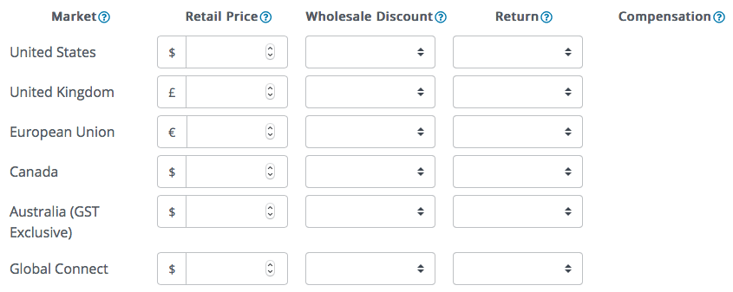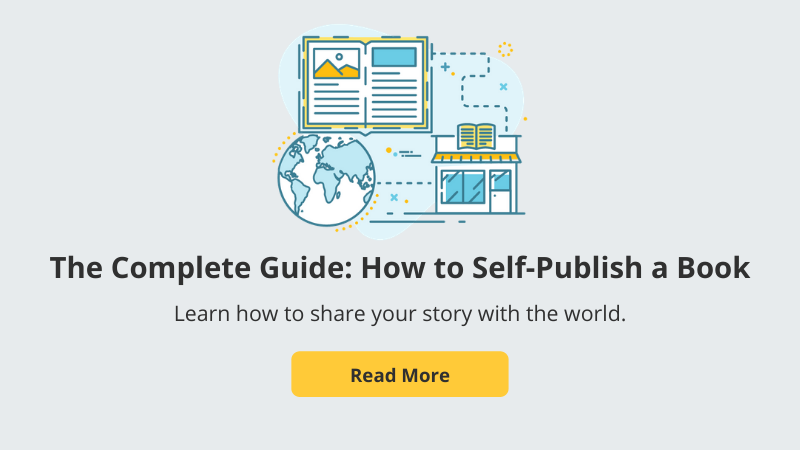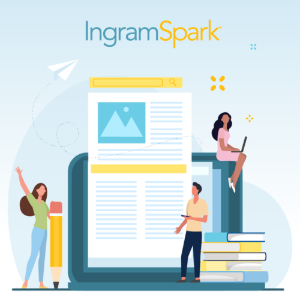When you embark on the journey of getting a book published, there’s a lot to consider and one of the things that should be on your priority list is how much you’ll be pricing your book for, which is a crucial piece of your book metadata. The editors of traditional publishing houses must fill out a profit and loss spreadsheet (P&L) before they can even acquire a book, let alone publish a book. The P&L accounts for decisions they’ll need to make in order to turn a profit on the book they hope to add to their list. So one of the best places to start when determining the profit goals of your book publishing endeavors is to seriously consider how you'll be pricing your book.
How to Price a Book
- Consider Your Goals
- Look at Other Book Prices
- Make Your Book Price Similar
- Review Formats and Trim Sizes
- Set Global Pricing
Consider Your Goals
An essential aspect of your book publishing plan will be to determine how to price your book. Before you can do that, you should consider your publishing goal. Is it to make as much money as possible? Sell as many copies as possible? Reach as many readers as possible? While many may assume these are the same goal, that’s not always the case, and how you price your book can impact all of these goals separately. You will need to think strategically about setting your price in your book metadata, but pricing is less overwhelming when you consider these few basics.
So, How Much Does it Cost to Publish a Book?
Look at Other Book Prices
In self-publishing versus traditional publishing, traditional publishers are already aware of what a book in a specific genre and of a particular trim size sells for because it’s their business to know, but that doesn’t mean you can’t too. What kind of book have you written? Is it a biography, history, or memoir? Perhaps you are publishing a quick beach read. Take your genre into consideration and do some research. Go to any bookstore and take a look. You can learn a lot by observing the books your book will be rubbing shoulders with, including the average price readers expect to pay for the type of book you’ve written. You can also ask a bookseller at what price point they typically sell a book like yours.
Visit your local bookstore and find the section where your book would be shelved, pull the ones similar to yours, and look at the price listed near the barcode. Only look at books you’d consider printing though. If you don’t intend to print a hardcover book, make sure you only compare prices with paperbacks. Be sure you also only look at examples that are roughly the same trim size, number of pages, and genre as the book you plan to publish.
You can also search online for books similar to yours to get a good idea of where to start when pricing your book. Look for both traditionally published and independently published titles. Remember that librarians buy and stock books, too, so you might also talk to your local librarian for their perspective.
Make Your Book Price Similar
One key to book publishing is making sure your title is priced similarly to titles like yours in order to be competitive. If you can price your book slightly less than other books in its genre, yours may have a competitive edge when potential buyers try to decide between your book and another. On the other hand, don’t cut the price too drastically. You still want to make sure you’re compensated at the rate that traditional publishers have valued books like yours, but if you can decrease the price by a small margin, it may help influence the consumer’s purchase.
Review Formats and Trim Sizes
While you’re at the bookstore, make sure to compare other trim sizes and formats to see if there’s something better suited for the book you’ve written. Maybe you thought you’d publish a book in the 6x9 trim size but discover that’s not a popular size in your genre. Perhaps you thought you’d print a book that was spiral bound but find that the books it’d be shelved with are all perfect bound.
Use IngramSpark's Publisher Compensation Calculator
IngramSpark provides a handy publisher compensation calculator that easily lets you figure out how much you can earn from the sale of each copy of your book depending on a few key factors. Simply enter your book's specifications, including the trim size, interior color and paper types, whether the binding will be paperback or hardcover, laminate style, the number of pages, list price, wholesale discount, and your market area (U.S., U.K., European Union, Australia, or Global). Then select "calculate" and see how much money you will make from the sale of one copy of your book at the price you've determined and the specifications you've chosen to print it.
Play With Aspects of Your Book
You may find that the per book compensation you'll receive for a book with your specifications isn't quite what you thought it would be. The easiest way to manipulate your P&L is in the price of your book, but you never want to make the mistake of pricing your book significantly higher than the competition to receive a higher per-book compensation. There is generally a little wiggle room in price between books that are similar in genre and format, but not much, so you don't want to make your book too expensive or too cheap compared to the books it will be shelved next to. Instead, don't be afraid to play with different aspects of your book to help you reach a better per book compensation. Perhaps you want to change the trim size or go with a paperback book versus a hardcover. Maybe you want to change the cover finish. Work with the many available options and see how they affect your level of compensation.
A note of caution: Don’t do anything so extreme as to make your book an anomaly in its category. One of our most helpful tips for publishing a book is making sure it fits in your genre. You want your book to stand out, but not in a way that makes it peculiar or unfamiliar to the readers who typically buy that type of book or in a way that makes it difficult to stock in its appropriate bookstore section. If your book-style does not fit industry standards for your particular genre or looks too different from its immediate competition, you may be putting yourself at a disadvantage when it comes to book sales. Booksellers don't buy books they don't know how to shelve and consumers don't buy books in their favorite genre that don't look like the books they're used to purchasing. There are many ways to make your book stand out in its category; format shouldn’t be one of them.
Keep in mind that the average compensation per book matters less the more books you sell, which depends on your business model. Some publishers selling 30,000 copies per year are comfortable receiving less than $1.00 per book in compensation. You may decide that compensation isn't your end goal and your publication is more about creating a beautiful keepsake or spreading the word on something about which you're passionate. If that's the case, your price point and formatting are less about industry standards and more about personal preference, which is why setting goals for your book before you begin the publishing process is always wise.
Set Global Pricing
Global book distribution and pricing your book for other countries can often be daunting for independent and self-publishers. You may be sitting in your small town when you decide to publish a book. You think you'll sell it online and perhaps to your local bookstores and libraries, but there's a world of possibilities available to you that you may not be taking full advantage of.
If you could set pricing for markets outside of your home country and achieve more book sales, why wouldn't you? IngramSpark grants you the ability to provide global pricing for your book, which means availability to more potential readers, potentially resulting in more book sales. Other markets open up a world of readers and require different pricing to fit into their marketplace.
Check the pricing of books in your genre across the globe, and use that as a guide for pricing your book in those markets. If you don't set prices for your book in additional markets, you are limiting the sale of your book. You may be surprised where your potential readers may be, but you'll never know if you don't first make it available to them.
When you create an IngramSpark account, you sign the Global Agreement, which gives you the option to add pricing in all available markets—USD (United States), GBP (United Kingdom), EUR (European Union), AUD (Australia – GST Exclusive), and CAD (Canada). Adding pricing in these main markets is easy and may make a world of difference in growing your fan base and increasing sales.
You enter this information per title in your IngramSpark account. So when you're setting up a new title or editing an existing one, it will be on the page where you enter your retail pricing and will look like this:

If you leave any of these blank, your title will not be for sale in those markets. There is a currency converter available on this same screen to help you price your books in markets you're unfamiliar with. Here's an extra tip, bookstores in all countries prefer the list price to end with .99 or .00 so when you convert your price for other markets, make sure what you enter in the box ends in that way. For example: if the currency converter suggests you price your book for $22.12, you'll probably want to round it up or down to $22.00 or $22.99 to avoid any special hesitation from bookstores.
Add Additional Pricing to Your Book(s) Now
Markets by the Numbers
Thrillers, crime and mystery novels still dominate the Australian book chart, with 49% of all Australians having read a book of that genre in the last 12 months. With the couple of clicks it takes to add pricing in Australian Dollars, you could be widening your audience by nearly 12 million readers.
Are you a first-time Spanish author who has only priced their debut Spanish-language novel in Euros? There are 41 million native Spanish speakers in the United States, meaning that even if your book marketing efforts only reach 1% of this you are exposing your book to 410,000 people who may not be able to purchase the book if it does not have a price in both Euros and United States Dollars.
In the United Kingdom, 2016 saw a rise of almost 10% in sales of non-fiction titles. With the launch of Ingram’s ipage® in the UK, providing bookshops the opportunity to purchase directly from Ingram in Pound Sterling, adding appropriate pricing to your titles (of any genre or target audience) could easily contribute to a rise in sales in future years.
It doesn't cost you anything more to have your titles priced in five markets than it does to only have your titles priced in one, and opening up your book distribution network through IngramSpark may uncover a potential fanbase in Italy or Canada that you never knew was out there.
Update Pricing in Your Account
Determining how to price your book—and in which markets—might seem overwhelming at first. However, it's rather easy when you go step-by-step and take advantage of resources like your local bookstore, online bookstores, IngramSpark's publisher compensation calculator, and the currency converter calculator. If you haven't uploaded a book yet, consider this post a helpful tip to get you started on the right foot for when you do!













